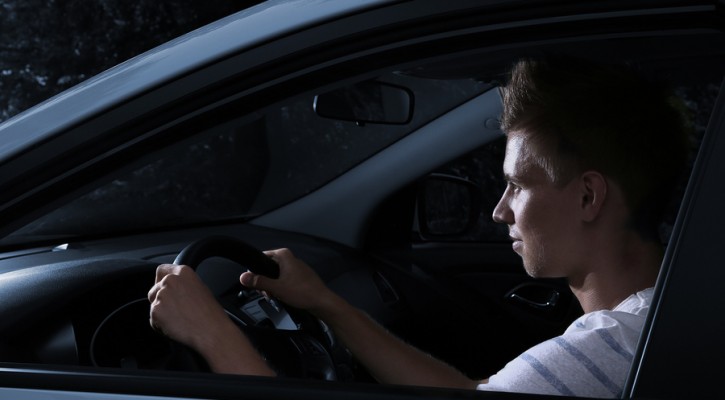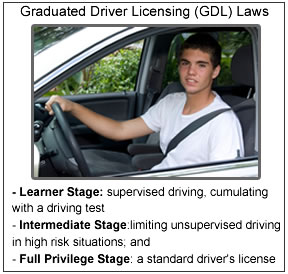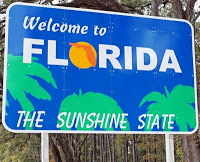Tag Archive: teen driving

Ask The Driving School Instructor: Why is it illegal for teens to drive late at night?
June 9, 2014
Question: Why is it illegal for teens to drive late at night? With fewer cars on the road it seems like it would be safer.
Answer: The short answer is that teen death rates skyrocket during those hours. There are several reasons for this. One is the lack of driving experience hasn’t exposed young drivers to all the possible hazards they might encounter on the roads and night time driving has its own particular types of hazards. The most obvious hazard is that it’s dark and it’s hard to see things on the road. Another is that there are many more drunks on the road at that time of night and a drunk driver, when confronted with bright lights will tend to drive toward the lights making it difficult to avoid a crash. The third reason is that people are tired and studies show that teens especially, with their busy schedules, don’t get all the sleep they need. Add distracting teen passengers and speed to that mix and the hazards multiply. The graduated driving laws are designed to ease teen drivers into the driving situation and allow them to gain driving experience before being allowed to drive with no restrictions.

Teens Most Likely To Crash In Their First Month Of Solo Driving
August 16, 2012
- failure to reduce speed,
- inattention, and
- failure to yield.

GPS Tracking Technology that Promotes Safe Teen Driving
July 6, 2010
GPS technology has existed for at least 30 years and over the last decade, we’ve seen a boom in consumer devices that utilize it. With faster satellite relays and increased accuracy it’s no wonder that there are more practical applications for everyday GPS use; for instance, teen driving safety
Most people think of in–vehicle GPS systems as simply a tool for helping a driver to get directions from point A to B however there are several GPS systems that are being marketed to parents for safer teen driving. All of these systems help parents or guardians keep track of the whereabouts of their teen driver via GPS location and only differ in the features they’ve included with each one.
Here’s a quick rundown on some of them:
Spark Nano – http://www.brickhousesecurity.com/product/spark+nano+gps+tracking+device.do, $99 plus subscription fees
The Spark Nano is marketed as the smallest, most highly-sensitive GPS tracking device for tracking teen drivers. This battery operated, web enabled device allow parents or guardians to keep track of their teen in real time. It also keeps track of speed, so parents know how fast their teen driver was going. The additional feature in this one is a panic button, which when pressed sends out alerts to parents of their location and that they are in need of assistance.
mobileteen GPS – http://www.mobileteengps.com/, $299 plus monitoring plan
The mobileteen GPS system, when installed in a vehicle, allows a parent/guardian to keep track of how fast the car was moving, and how long the car has been in one location. Parents/guardians can login to their site to monitor real-time activities. It also allows parents/guardians to set a “ForceField” to alert them via text messaging or email when the car moves, useful when they are out of town, or when the teen is forbidden from driving. It also allows them to set approved/unapproved driving locations and to be alerted when a violation is committed. There is also a Repair/Response feature that helps locate teen drivers when they are having problems with the vehicle.
Safe Teen Driving Club’s Active GPS System – https://www.safeteendrivingclub.org/prodpurchase_vt.php.
This system also acts as an anti-theft device for the vehicle and could help lower insurance rates. The Active GPS System only activates when the ignition is on. It tracks speed and location, and sends out automatic reports (set by the user). The parent or guardian may also check a web-based site to view the real-time coordinates of their teen driver on a map. This system has to be professionally-installed, and that may add to the total cost of the system.
Marcus Teen Tracking System –
The Marcus Teen Tracking System provides real-time location information on your teen drivers and alerts parents or guardians if they go beyond a certain speed. It also allows the creation of unapproved driving zones and provides driving directions.
Additional Driver Safety Information on In-Vehicle Technology:
The Drawbacks Of In-Vehicle Technology

How to Deal with Underage Drinking: Tips for Parents
September 15, 2009
Restricting your teen’s access to alcohol is one of the most important things you can do for them as a parent. There are highly-publicized risks of fatal alcohol poisonings and devastating motor vehicle crashes due to drinking and driving, for example. But there are other, less-publicized risks that could be equally destructive to your teen’s health and well-being, such as increased risk of sexually transmitted diseases and unintended pregnancy, violence and rape, and suicide.
Of course, underage alcohol use has consequences other than legal ramifications:
- Early alcohol use, independent of other risk factors, strongly predicts the development of alcohol dependence. Of all people who ever meet the diagnostic criteria for alcohol dependence in their lifetime, nearly half do so by age 21 and two-thirds by age 25.
- Due to differences between the adult brain and the brain of the maturing adolescent, many young drinkers:
- Are able to consume much larger amounts of alcohol than adults before experiencing the negative consequences of drinking, such as drowsiness, lack of coordination, and withdrawal/hangover effects.
- Are particularly sensitive to the positive effects of drinking, such as feeling more at ease in social situations; young people may drink more than adults because of these positive social experiences (NIAAA, 2009).
- Recent evidence suggests adolescent drinking can inflict permanent damage on the developing brain (National Research Council and Institute of Medicine, 2004).
To help your teen avoid the use of alcohol and its attendant problems, maintain an ongoing, open dialogue about underage drinking and the risks involved. Make sure she understands that underage drinking is never acceptable. The fact that she is at a party or it is a special occasion or that some parents might “look the other way” when their teenage children drink alcohol does not change the fact that underage drinking is illegal and very dangerous. If your teen is attending a party at a friend’s house, make sure her friends’ parents don’t intend to provide alcohol; this is illegal in every state. You might be surprised to discover that other parents plan to provide their teens and their friends with alcohol in a “safe” manner and location. Make sure your teen understands that other adults can’t give her permission to drink alcohol. An alternative is to talk to your teen about organizing a get-together at your own home.
If you and your teen decide to host a party, make a guest list with your teen. Limit the number of teens so you can be sure of adequate chaperonage. Be sure you have contact information on each teen’s parent. Make sure guests and their parents understand that if a teen leaves the party, he won’t be allowed to return and parents will be called. Make sure parents who won’t be chaperoning know the start and end times of the party and will prearrange transportation. Collect all keys so you can keep track of who is arriving and leaving. Keep coats and purses in an area that can be monitored. Speak to each person before he leaves; check for warning signs of impairment. If a guest arrives at the party already under the influence of alcohol or other drugs, keep him there while you call a parent to pick him up. If he leaves and someone is hurt or injured, you could be held responsible.
When your teen spends the night at a friend’s house or goes to a party, call the hosting parent to find out the details. Make sure the hosting parent shares your concerns about the availability of alcohol and that none will be permitted. Ask how much supervision will be provided. Volunteer to chaperone and provide transportation. Let your teen know that you will not approve any outing without sufficient notice so you can speak to the hosting parent first. If your teen will be riding anywhere, at any time, with a friend, make sure it is with someone whose parents do not permit the use of alcohol. Teens are at great risk when riding with other teens, even under the best of circumstances. Talk to your teen about a back-up plan in case something goes wrong.
When your teen is going out for a special event, have her make a record of the planned itinerary for the evening and make sure she agrees to inform you of any changes. Be alert to spontaneous changes in plans on the night of the event; your teen won’t have as much control over the situation if it takes place in an unfamiliar location and/or with people she doesn’t know well. In the excitement of the evening, she could end up in a risky situation before she realizes what is happening.
Create a code with your teen so he can signal for help without attracting the attention of friends. If you don’t know how to text, ask your teen to give you a few lessons; texting is a much easier way for you to communicate than via phone. When you arrive to pick up your teen, he can blame you for having to leave or you can give the excuse of a “family emergency.” Make an agreement that if you do have to pick him up, a discussion about the reason can be tabled until the next morning, when you and your teen are both calm and safe. Otherwise, your teen may avoid calling you for help because he doesn’t want you to know about the circumstances that required the ride home.
And, last but certainly not least, realize that your teen is vulnerable to making poor choices every day. Don’t let your guard down. Finding a balance between being too controlling and allowing too much freedom will require constant effort, but it is a worthwhile endeavor. Your teen’s health and happiness may depend on it.

Top 3 Most Dangerous Cities for Teen Drivers are in Florida
August 29, 2009
Two studies, one by Allstate Insurance Company and the other by Reader’s Digest, indicate that geography plays a part in teens’ risk of injury and death in motor vehicle crashes. And because of their age group, teens are already at great risk. The number one killer of American teens is motor vehicle crashes; one study shows that the problem is particularly serious in Florida. Every year, over 5,000 people aged 16-20 are killed in motor vehicle collisions, according to the National Highway Traffic Safety Administration.
The ten riskiest cities out of the 50 largest urban areas in the US were selected using statistics from the national Census Bureau, federal crash data, and company claims information on teen passenger vehicle collisions. The most dangerous US cities for teen drivers are Southern, with the top three in Florida. Of the top 50 cities in the country for teen fatality crashes, Tampa/St. Petersburg/Clearwater, Orlando/Kissimmee, and Jacksonville rank number one, two and three, respectively.
The analysis by Reader’s Digest categorizes states according to their current Graduated Driver’s Licensing (GDL), seat belt, and Driving Under the Influence (DUI) laws. According to the study, Alaska, California and Delaware rank as the top three; three of the worst states include North Dakota, Mississippi and Arkansas. Florida is categorized as “Fair,” the next-to-lowest ranking. Interestingly, California cities also scored high in the Allstate study: San Francisco/Oakland, San Jose, and Los Angeles were numbers one, two, and four.
Factors that contribute to teen motor vehicle crashes include:
- Speeding/driving too fast for conditions -Driver distraction, including cell phone use and dealing with passengers -Inexperience -Driving at night -Driving under the influence of alcohol or drugs (including prescription and over-the-counter drugs)
- Teens also often neglect to wear their seat belts, increasing the risk of serious injury or death in a crash. An observational study by the Utah Department of Health found that the teen seat belt use rate falls when other high-risk factors are present, such as when teens drive under the influence of alcohol, drive at night, have multiple teen passengers, or are driving without a driver’s license.
The risk factors listed above, including seat belt requirements, are addressed by GDL laws in many states. Before advancing to the next phase of licensure, young drivers must show progress by complying with specific restrictions. Driver education was a part of the curriculum in 90% of US high schools during the 1980s; in 2009, only 20% do. GDL laws are of increasing significance in the effort to reduce teen crash rates, because teens get most of their driver training from their parents and are often subject only to state requirements after licensure.
While a national model for GDL laws has existed since the mid-1990s, no state follows all of the requirements. To show the disparities among states, The National Safety Commission (TNSC) analyzed the GDL laws in four states: California, Florida, Mississippi, and North Dakota.
- The minimum age for a learner’s permit in California is 15 years, six months; the minimum age is 15 in Florida and Mississippi. In North Dakota, the minimum age is 14.
- While California and Florida each require 50 hours of practice driving with a parent or guardian in the learner’s permit stage, 10 hours of which must be at night, neither Mississippi nor North Dakota require parental certification of any driving practice hours.
- North Dakota does not have any passenger or nighttime restrictions, and Florida and Mississippi have only nighttime restrictions. California’s passenger restriction is that for the first 12 months, the restricted driver may have no passengers younger than 20, with limited exceptions for immediate family.
Comprehensive GDL laws reduce deaths among 16-year-old drivers by 38%, according to a study by Johns Hopkins University for the AAA Foundation for Traffic Safety; the Reader’s Digest study also supported the idea that better GDL laws mean that fewer teens will die in motor vehicle crashes. However, TNSC points out that parents must actively participate in their teens’ driver education by enforcing GDL laws as house rules, rather than leaving the issue to law enforcement. The possibility of legal consequences for teens who don’t abide by their state’s GDL laws should serve as support for parental restrictions, not take the place of them.
